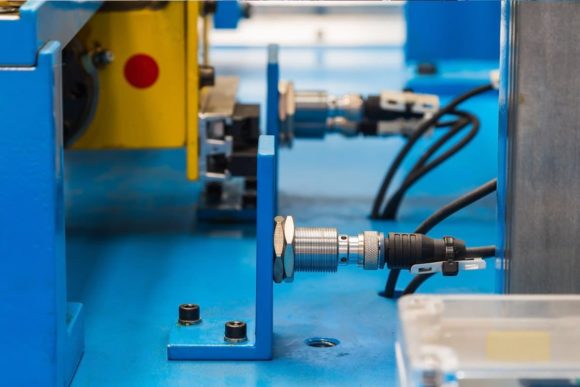Proximity sensors have long been an innovation that helped give rise to the highly advanced, automated systems we have today. Since its creation, its technology has only continued to evolve into variations that enhance numerous industries.
There is no doubt that the machining industry is one of the beneficiaries of the greatness of proximity sensors and is continuing to utilize their technology. This, however, has more complex contributions to the manufacturing industry than one might think and may even prove to be a foundational aspect. To further understand the role of proximity sensors in boosting the machining industry, let us take a more in-depth look.
Proximity Sensors
The ability of proximity sensors to gather and convert information into electrical signals without contact makes them the highly regarded technology that it is. These advanced automation devices revolutionized the operational aspects of numerous industries with the following features:
Contactless Sensing
The sensory technology present in proximity sensors allows for relevant data collection via contactless sensing, which is a common feature needed by most operations.
Surface Condition Distinction
The ability of proximity sensors to refine the detection of movement strictly to physical changes makes way for error-free identification and smoother operations.
Diverse Applications
In comparison to optical sensors, proximity sensors better accommodate changes in temperature and moisture conditions.
Longevity
The semiconductor outputs in proximity sensors increase their longevity and utilization.
Impeccable Response Rates
Without the need for pH and physical contact, proximity sensors deliver faster response rates to the system, ultimately maximizing output and decreasing cycle time.
The Machining Industry
The machining industry is one of the industries that can not afford to be outdated. Throughout the years, it is exactly their utilization of advanced technologies that optimized their operations and granted their success.
The demand of the machining industry today is one of the greatest it has ever been, and it is only growing at an exponential rate. Beroe Incorporated procurement intelligence firm currently puts the global machining market value at $341.91 billion and projects a CAGR of an astounding 6%-7% this year alone.
The high-grade equipment and heavy processes involved in this industry are, at the very least, extremely high-maintenance and precise. There is absolutely no room for compromise and sub-par standards, neither is there any allowance for the bare minimum. Each aspect of the industry must exhibit exceptional quality and accuracy. This is coupled with its extensive ongoing operations to accommodate consumer demands to keep the business afloat.
Machining industries utilize advanced proximity sensors in their various sectors to better adapt to today’s conditions and run relevant services. From communication to tracking to measurement, smart manufacturing relies heavily on sensory technology to perform efficiently.
Proximity Sensors In The Industry
Proximity sensors make object detection, positioning, inspection, and counting aspects of most systems more convenient and efficient with their automation. Leading automation companies like OMCH guarantee that these devices have adapted well and stay updated, if not ahead of their time.
Sensory technology plays a pivotal role in all the industrial sectors of machining. Proximity sensors, more specifically, contributed to the boosting of the machining industry by serving the following functions:
Safety and Security Promotion
The prevalence of proximity sensors is more than evident in today’s society after the rise of COVID-19. In commercial industries, they are being used to detect body temperature and dispense disinfectants and sanitizers.
In the machining realm, this technology promotes safety by identifying anomalies in temperatures for both the workforce and the working conditions. Proximity sensors also signal automated disinfection processes for the equipment and materials.
For security, proximity sensors identify suspicious activity and alert the department by triggering alarms. It is especially useful in detecting social distancing violations as well.
A safe and secure environment prevents the likelihood of unfortunate events, which lets the workforce body be more productive without worry.
Automatic Calibration
Manufacturers of advanced proximity sensors incorporate ASIC to increase efficiency and improve mechanisms. Compared to traditional sensors, new age ones are digitally calibrated through their applications and programs instead of manually, making them a low-maintenance asset for industry owners. This feature lets executives focus the workforce energy towards other aspects of the business.
Manufacturing Operations
The fundamental role of sensors in the machining industry is their facilitation of industrial operations. Smart proximity sensors are now running the monitoring and control of machining processes with real-time data collection with its IoT connectivity for full automation.
Automated systems are crucial in minimizing operational errors and increasing efficiency and progress. If implemented thoroughly, the resulting system will create quality outputs that will grow the business.
Vehicle Navigation
The careful transport of heavy machinery and equipment is crucial in manufacturing. Advanced proximity sensors perform a wide array of functions to address this part of the industry and ensure it does not go overlooked.
They pave the way for safer and more accurate navigation, with obstacle sensing and fault detection features applied in smart and autonomous vehicles. Transportation in extreme weather and environmental conditions is also made much easier with smart proximity sensors.
Market Drivers
Proximity sensing technology is vital in advancing the market for machining industries. Its acquisition and delivery of valuable data for industrial applications lets operations run efficiently. This leads to a radical increase in productivity and service output, resulting in a continuously growing business.
Without this innovation, the advancement of the manufacturing processes involved would cease to exist, consequently ending in a stagnant industry. Contactless sensing made available by sensory technology now takes over the information acquisition, monitoring, and control functions in machining industries.
Adaptable Systems
Since there is such a high demand that only continues to grow in the machining industry, the need for adaptable systems is non-negotiable. Not only do proximity sensors let operations run more efficiently, but they also accommodate innovations in machinery and adapt to ongoing modifications to continuously produce advanced products.
The machining industry would not be the powerhouse today without the incorporation and utilization of smart proximity sensors in its systems and operations.

